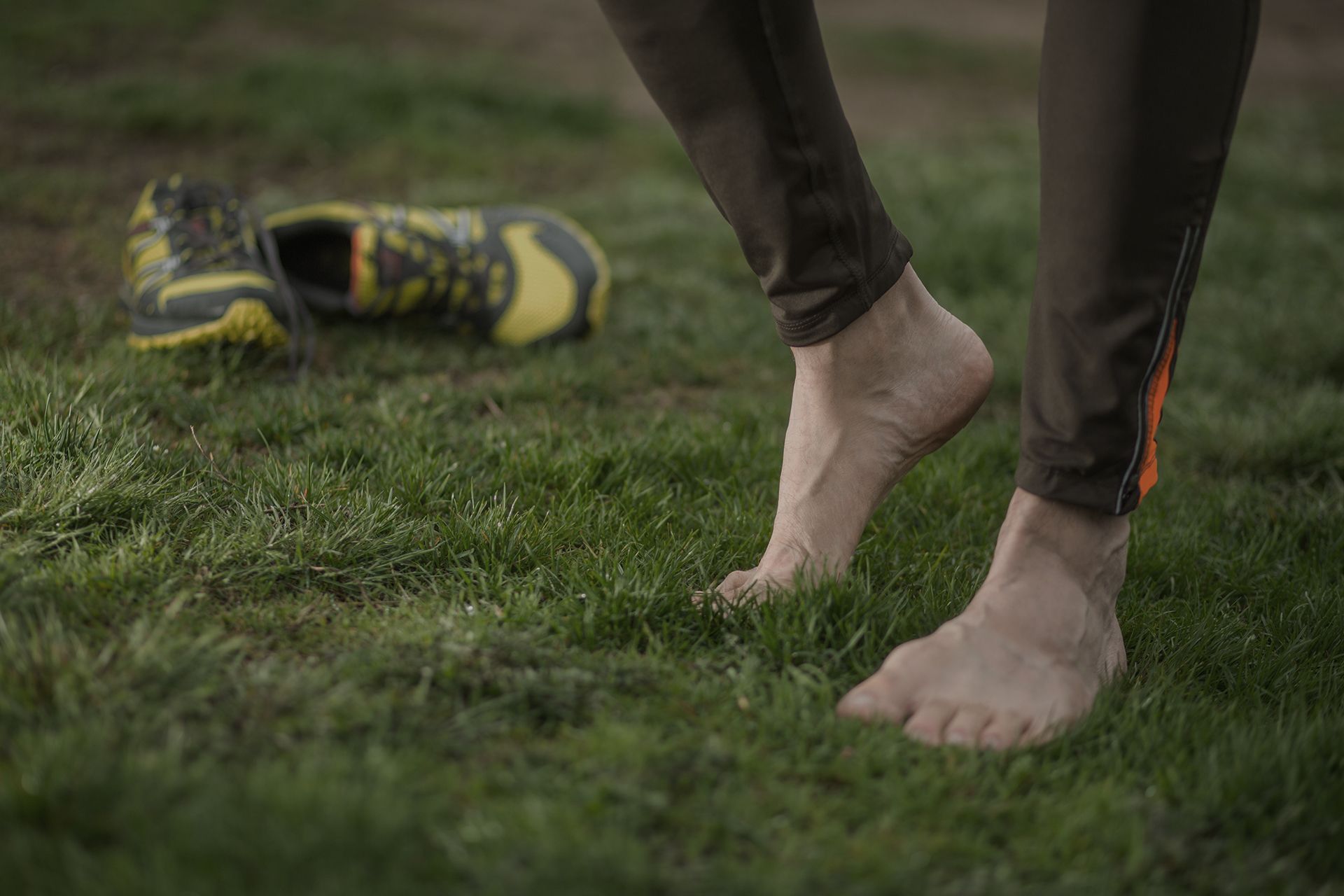Diabetic Foot Ulcers: More Than Just a Wound
For many with diabetes, the risk of complications to the foot is an unfortunate but very real concern. Diabetic foot ulcer is one of the most serious of these complications, though it’s frequently underestimated. This can lead to severe health consequences, including amputation, if not appropriately managed.
A diabetic foot ulcer is an open wound or sore, usually located on the sole or around pressure points, such as the ball or heel. These ulcers develop when high blood sugar levels damage blood vessels and nerves, reducing circulation and sensation. People with diabetes can develop neuropathy over time due to high blood glucose levels, which causes nerve damage and impaired healing. As a result, minor injuries go unnoticed, heal poorly and may become infected. Over time, what starts as a minor wound can become a life-threatening issue.
At The Foot Practice, we consider the whole picture, from identifying the causes of diabetic foot ulcers to providing integrated treatment plans that support healing and long-term prevention. With early diagnosis, tailored care and regular monitoring, many diabetic ulcers can be treated successfully and even prevented altogether.
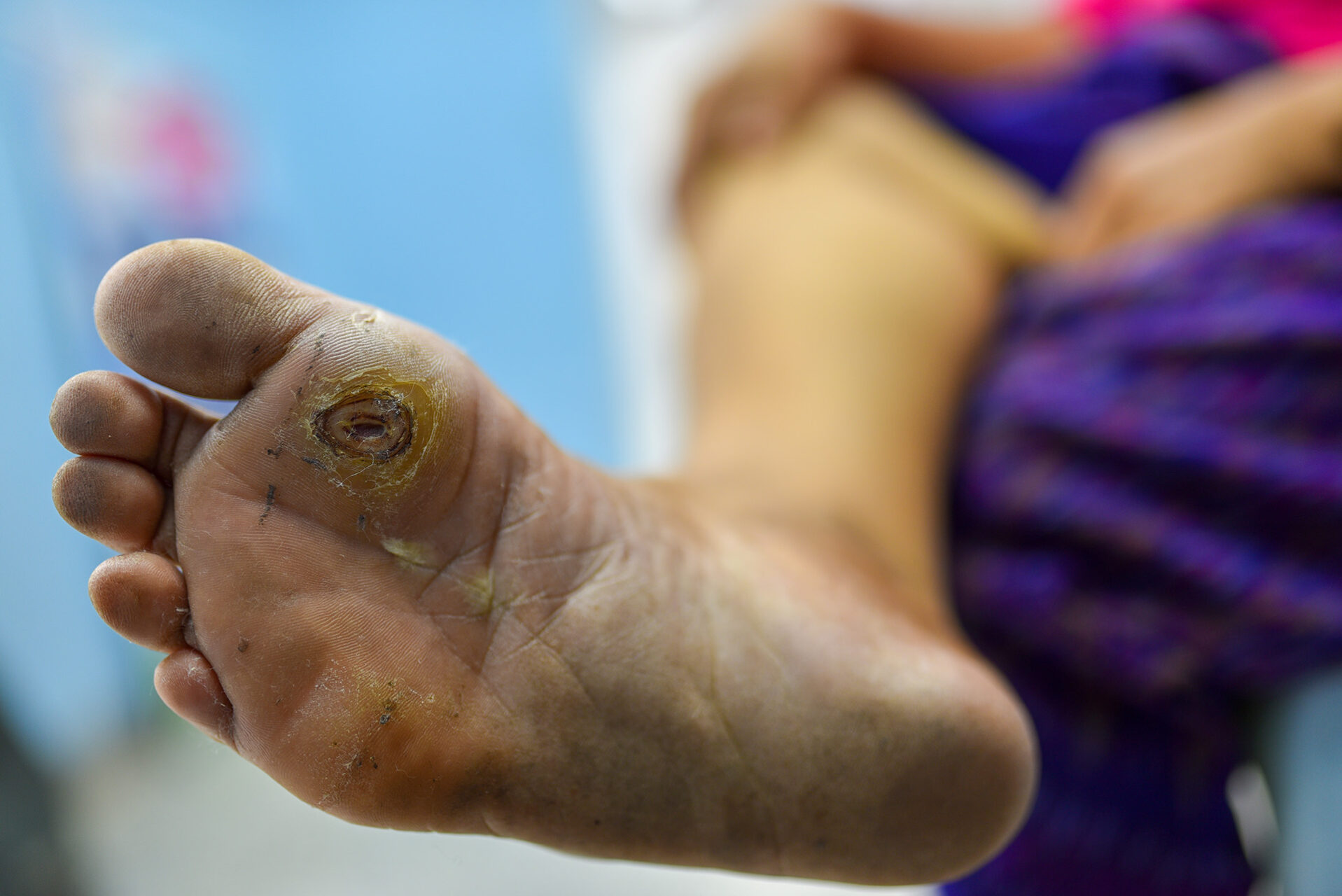
What Causes Diabetic Foot Ulcers?
The underlying diabetic foot ulcer causes are complex but primarily relate to prolonged high blood sugar levels. Over time, high glucose levels can lead to peripheral neuropathy, a type of nerve damage that impairs sensation in the feet. This means someone with diabetes may not feel a blister forming, a cut or pressure from ill-fitting shoes.
Diabetes also contributes to peripheral arterial disease and other forms of vascular disease, where narrowed blood vessels reduce circulation to the extremities. Decreased blood flow due to vascular disease is a significant factor in the development of diabetic foot ulcers, as it impairs wound healing. With less oxygen and fewer nutrients reaching the tissues, even minor wounds struggle to heal.
Other contributing factors include biomechanical foot deformities such as hammer toe, previous foot injuries, poor footwear and conditions like calluses and corns that increase localised pressure. High cholesterol is also a risk factor that can contribute to the development of vascular disease and poor circulation.

Recognising the Signs and Symptoms of Diabetic Foot Ulcers
Recognising early-stage diabetic foot ulcer symptoms is crucial. An early-stage diabetic foot ulcer may appear as a small break in the skin, possibly surrounded by redness or swelling. It may not be painful, especially if diabetic neuropathy has reduced sensation, delaying action as patients may not feel pain due to nerve damage. This is why it’s even more important for people with diabetes to do daily foot checks.
Other diabetic foot ulcer symptoms include persistent swelling, warmth, or a foul odour emanating from the wound. Discolouration, black tissue (a sign of serious infection or tissue death), cracked skin (especially from fungal infections like athlete’s foot), and pus are indicators of more advanced ulcers and potential infection. Some ulcers may form under a callus and remain hidden until they worsen. At The Foot Practice, we emphasise patient education and daily observation for patients with diabetic foot ulcers in Singapore. Any new skin change, wound or unexplained swelling should prompt immediate attention from a podiatrist.
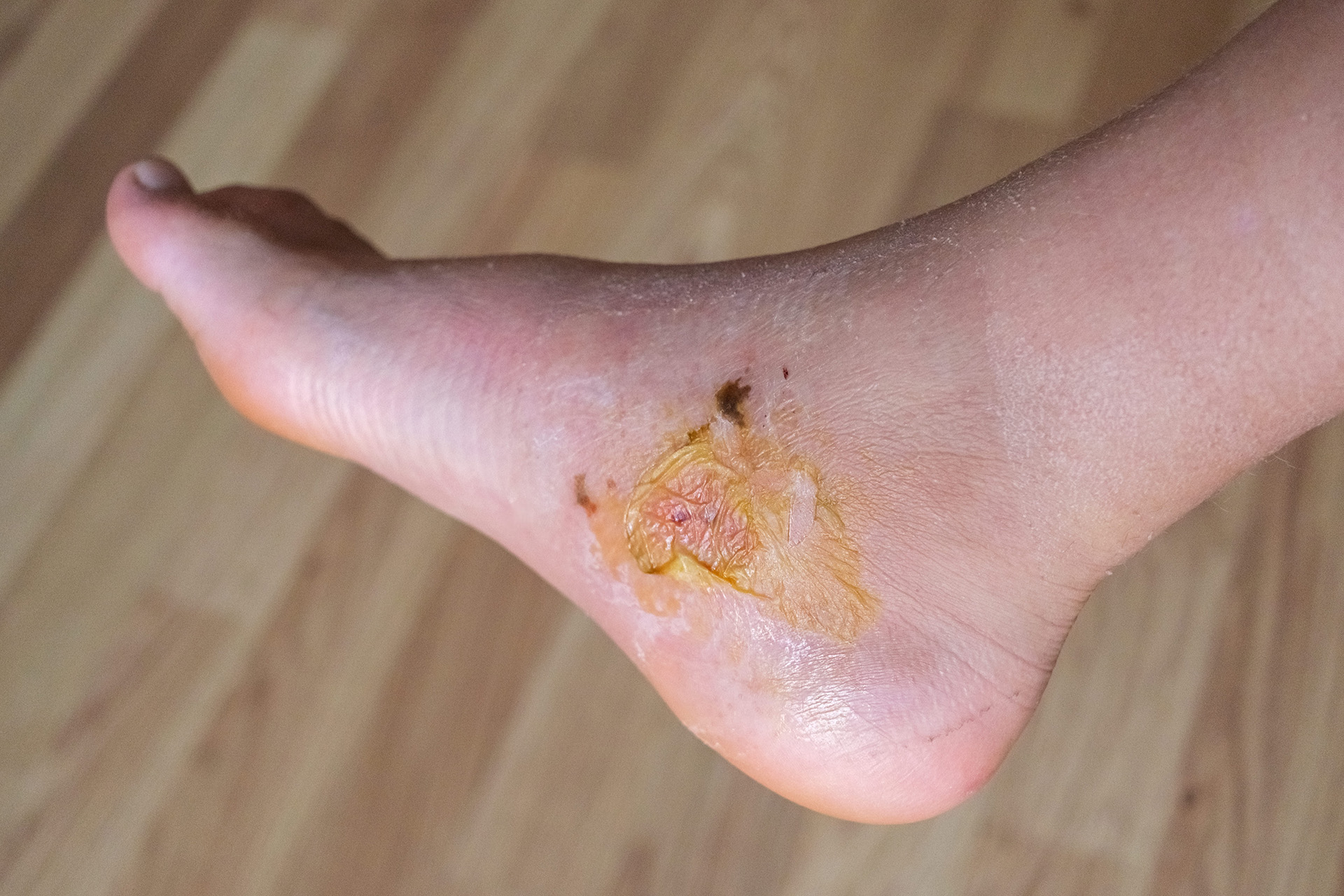
Diagnosis and Evaluation
When a patient presents with a suspected diabetic ulcer, we start with a thorough physical examination and medical history. Our team evaluates nerve function and biomechanics with particular attention to assessing blood circulation as part of the diagnostic process. We may also perform imaging or laboratory tests to check for bone involvement or infection, as this may require more urgent action.
This comprehensive evaluation enables us to assess the ulcer, identify foot complications and evaluate specific foot conditions that will impact management. Surgical debridement may be performed as a standard intervention to remove necrotic tissue and promote healing. Our goal is to promote healing, preserve tissue and prevent recurrence.
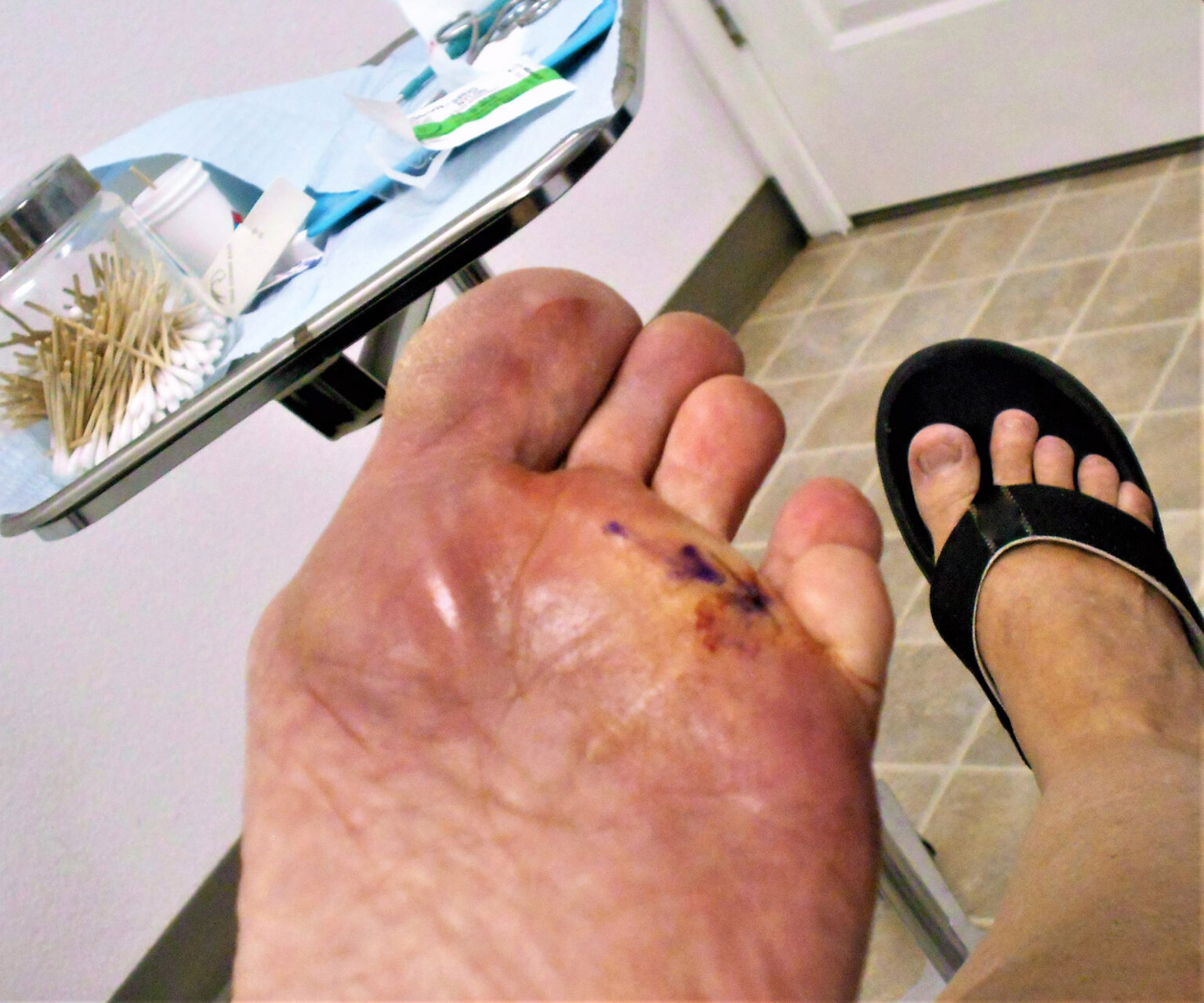
Your Healthcare Team for Diabetic Foot Ulcers
Your primary care physician is often the first line of defence, helping you to monitor your overall health, manage blood sugar and spot early signs of foot ulcers. An endocrinologist works closely with you to manage blood glucose levels, which is essential for healing foot ulcers and preventing new ones from developing.
A critical part of the team is the podiatrist, your go-to specialist for all things related to your feet. They do regular check-ups, address foot problems before they become major issues and offer expert advice on nail care and footwear. If blood flow to your feet is compromised, a common issue in diabetes, a vascular surgeon may step in to assess and improve circulation, which is critical for healing and reducing the risk of serious complications.

A Holistic Approach to Treatment
Podiatric practice has moved beyond basic wound dressing. Today, advanced assessment and treatment methods allow for a highly individualised and effective plan for each patient with a diabetic foot ulcer.
At The Foot Practice, our approach combines multiple modalities into one treatment pathway. RehaWalk® pressure sensor treadmill gait analysis provides real-time data on how pressure is distributed across the foot during walking. This reveals abnormal gait patterns and identifies high-risk areas prone to ulceration, providing essential information for the management and prevention of diabetic foot ulcer recurrence.
With this information, we do comprehensive footwear assessments that go beyond a simple shoe fitting. Recommendations may include footwear with added depth, reduced-friction materials, or custom modifications to relieve pressure over vulnerable areas.
Custom orthoses are often prescribed based on the patient’s specific pressure distribution and foot shape. These devices help redistribute weight away from ulcer-prone areas, thereby improving comfort and enhancing healing outcomes making them crucial for long-term diabetic foot ulcer management.
To support joint flexibility and reduce the risk of further mechanical stress, we include mobilisation exercises in our care plans. Limited mobility in the ankle or foot joints can lead to abnormal walking patterns and increased pressure. By restoring normal function and strengthening the muscles around the foot, we create a more stable foundation for recovery.
Together, these tools, from RehaWalk analysis, footwear optimisation, custom orthoses and targeted mobilisation, provide an integrated approach to healing and future ulcer prevention.

Managing Diabetes to Protect Foot Health
Of course, treating the ulcer itself is only part of the picture. Proper diabetes management is key to both the treatment and prevention of diabetic foot ulcer recurrence. Poor glycaemic control slows healing and increases the risk of infection. A balanced diet, medication adherence and regular physical activity are key to this strategy.
At The Foot Practice, we educate our patients to understand how their glucose levels relate to their ability to heal. In some cases, ulcers do not improve despite podiatric care because systemic blood sugar is still elevated, so it’s important to heed the experts’ advice.
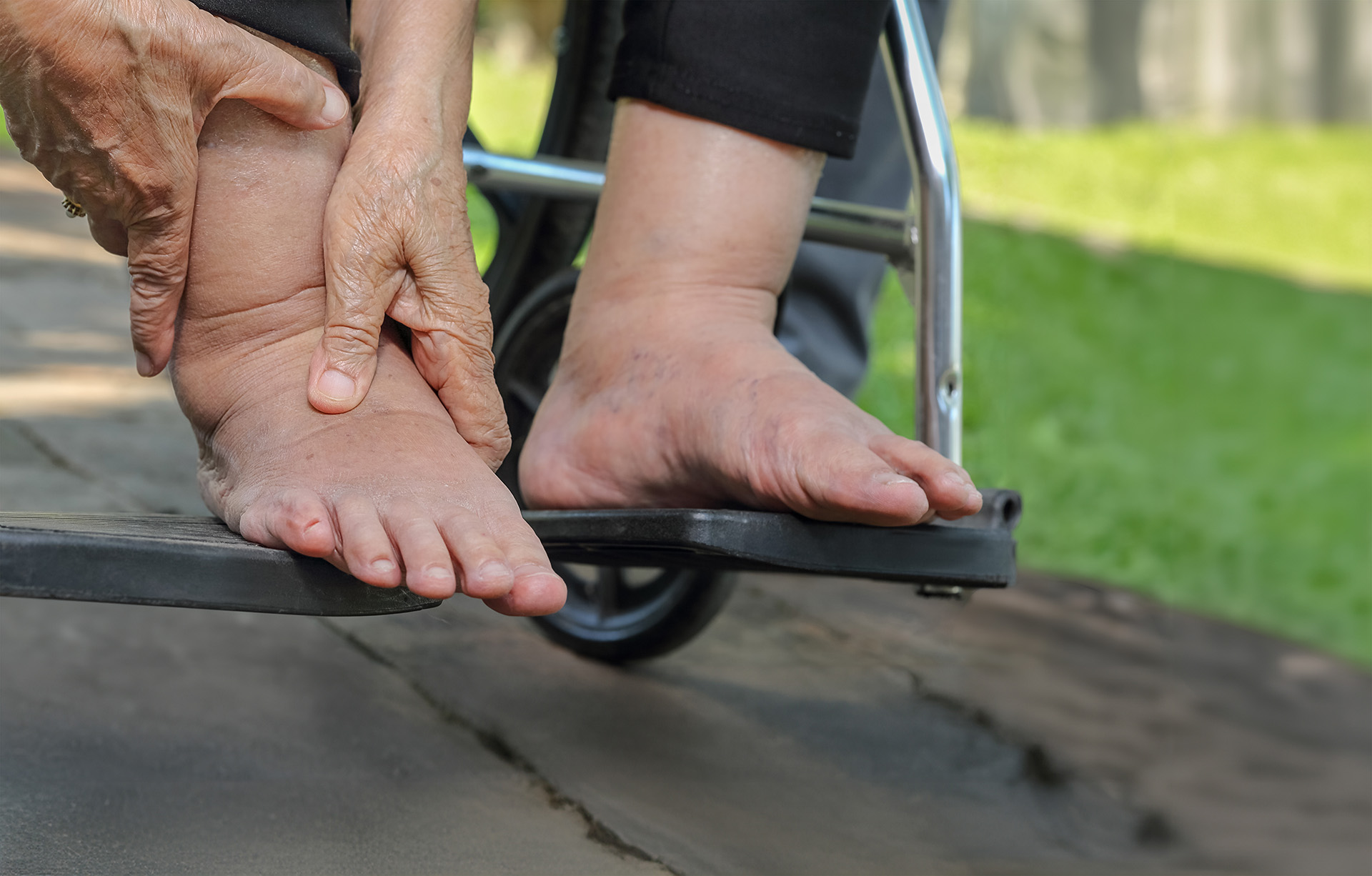
Daily Foot Care and Hygiene
Daily foot care and hygiene can make the difference between an ulcer that heals and one that becomes chronic. We teach our patients how to inspect their feet daily, how to clean them with gentle soap and how to keep the skin moisturised without applying lotion between the toes.
Trimming toenails carefully, avoiding self-treatment of corns or calluses, and wearing clean, dry socks are small steps that play a significant role in reducing risk.
If a patient has a foot deformity or bony prominence, we may recommend regular debridement or the use of protective padding to prevent complications. If you notice any concerning foot conditions, such as persistent redness, swelling, or signs of infection, consult a healthcare professional for proper diagnosis and treatment. Again, this is where our custom orthoses and footwear assessments play a critical preventive role, redistributing pressure and minimising areas of friction.

Wound Care in Practice
We take wound care seriously. Every diabetic ulcer gets a tailored plan that may involve special dressings to maintain optimal moisture balance, antibacterial treatments, or pressure-relieving techniques. In cases of infected diabetic foot ulcers, accurate diagnosis and prompt management are key to improving prognosis and preventing complications.
Patients are monitored regularly for signs of infection, including changes in odour, colour or exudate. If an infection is suspected, we act quickly to culture the wound and initiate appropriate antibiotic treatment based on the results, aiming to control soft tissue infections and mitigate the risk of osteomyelitis.
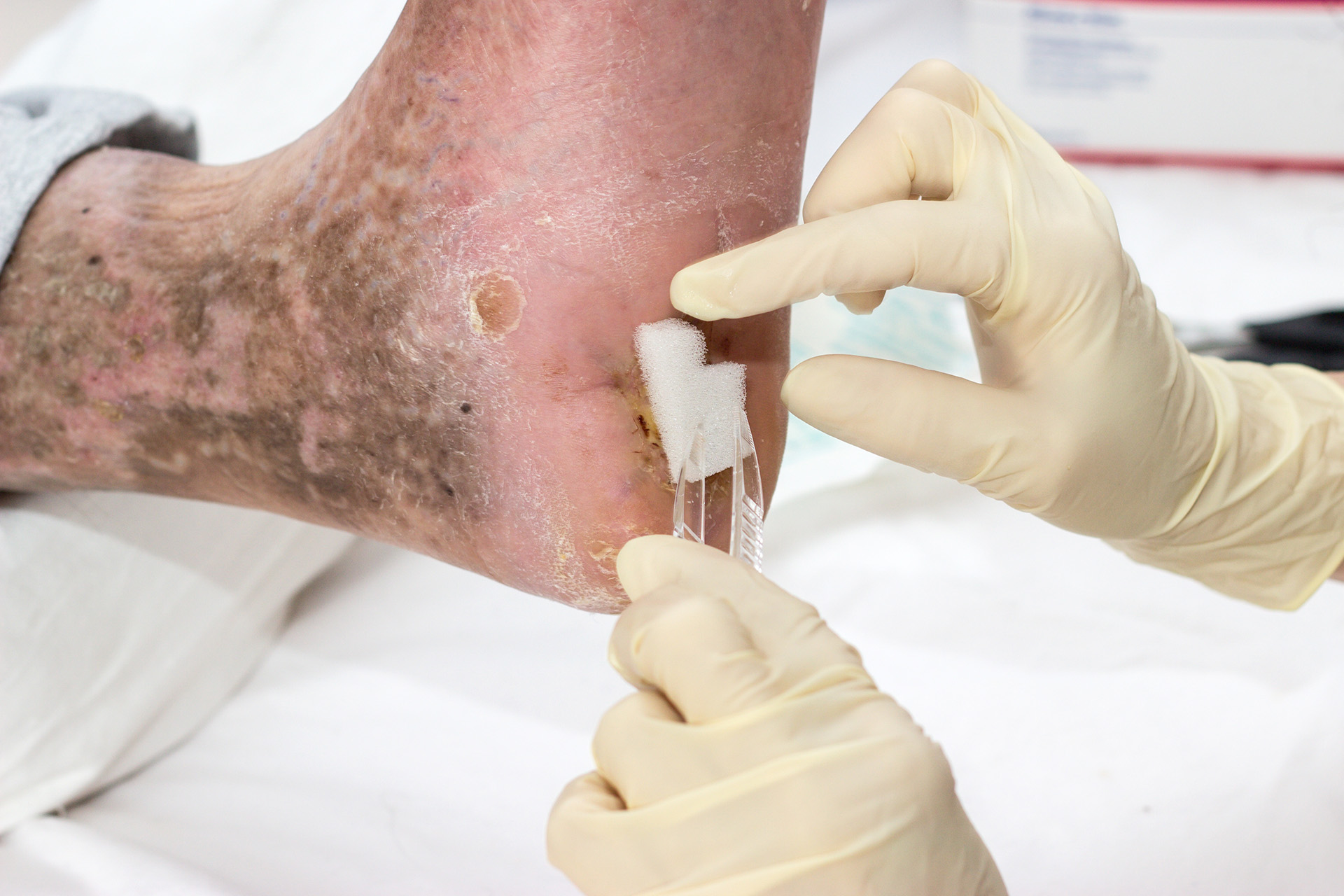
Understanding Complications
While many diabetic foot ulcers can be managed with early intervention, complications can arise if not treated promptly or properly. One of the most significant risks is infection, which can spread from the ulcer to the surrounding tissues or even the bone, causing osteomyelitis or sepsis. These infections can cause swelling, redness and a foul odour and may require hospitalisation. If left unchecked, these complications can lead to amputation, which has a significant impact on mobility and quality of life.
That’s why it’s so important to monitor your feet daily and seek medical attention at the first sign of trouble. Early detection and treatment are crucial for preventing serious health issues and facilitating healing.
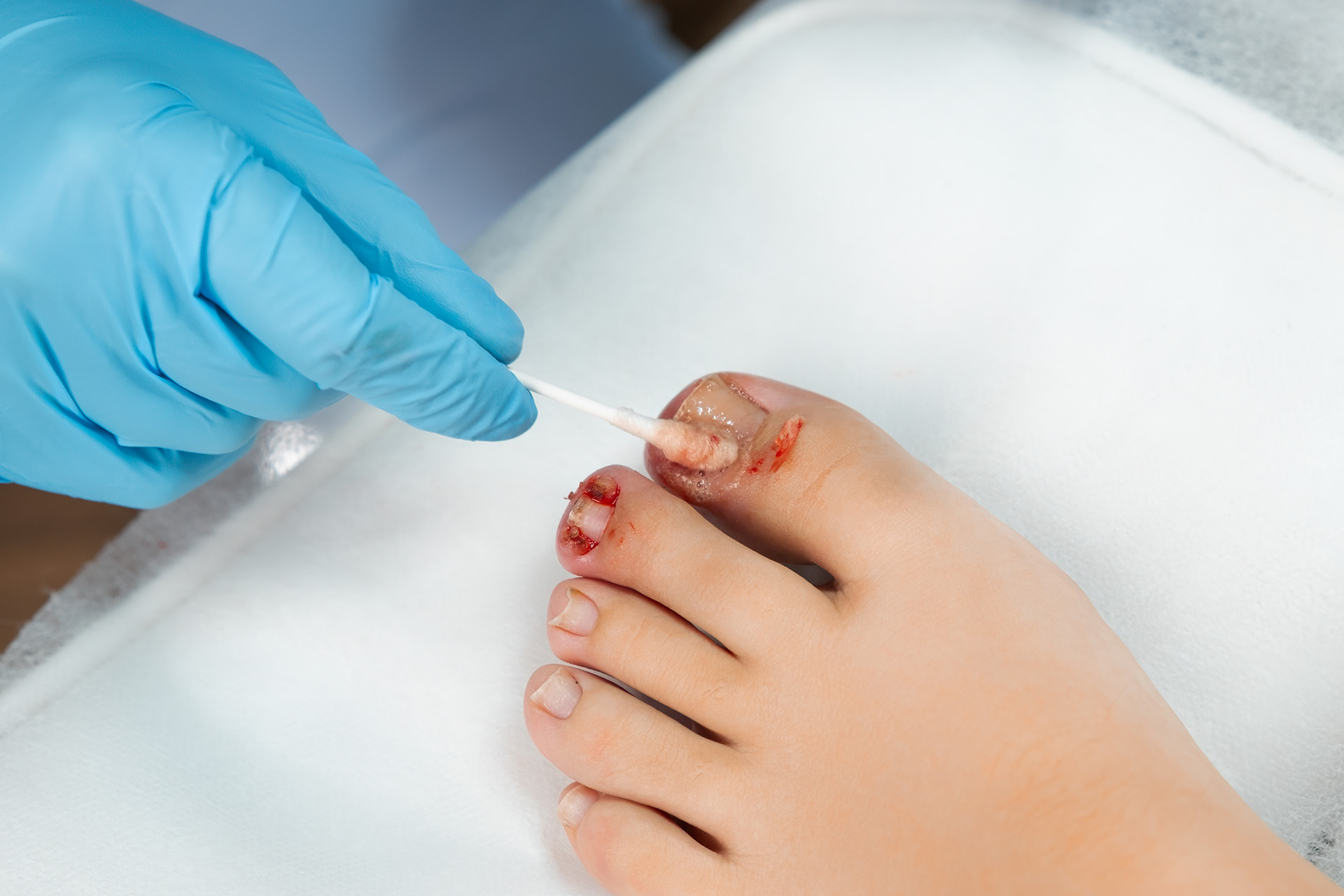
Rehabilitation and Long-Term Management
Healing a diabetic foot ulcer doesn’t end when the wound closes. Long-term diabetic foot ulcer management includes rehabilitation to restore function and prevent further injuries.
This may include physical therapy to improve range of motion, walking patterns and strength. Patients with significant structural foot changes may need to continue using supportive footwear or orthoses. Regular follow-ups with a podiatrist are crucial. These visits allow us to monitor for signs of recurrence and ensure any new concerns are addressed promptly. Whether a patient enjoys long walks, gardening or sports, we aim to help them return to those activities safely.

Postoperative Care After Surgery
If surgery is needed to treat a diabetic foot ulcer, a thorough postoperative care plan is essential for a smooth recovery. After your procedure, keeping the affected area clean and dry is a top priority. Your healthcare provider will give you specific instructions on changing dressings and caring for the wound to prevent infection and promote healing.
Blood sugar management is just as important after surgery as it was before. Stable blood glucose levels help your body heal and reduce the risk of further complications. You may also be advised not to put weight on the affected foot. Using crutches, a wheelchair, or other off-loading devices can help protect the healing area.
Regular follow-up appointments with your healthcare provider are crucial. These visits allow your team to monitor the healing process, address any concerns and adjust your treatment plan as needed. In some cases, antibiotics may be prescribed to prevent or treat infections.
By following your postoperative care plan, you can lower your risk of serious complications like infection or amputation and support your body’s natural healing process. Remember, your commitment to wound care and blood sugar management is key to a successful recovery and long-term foot health.
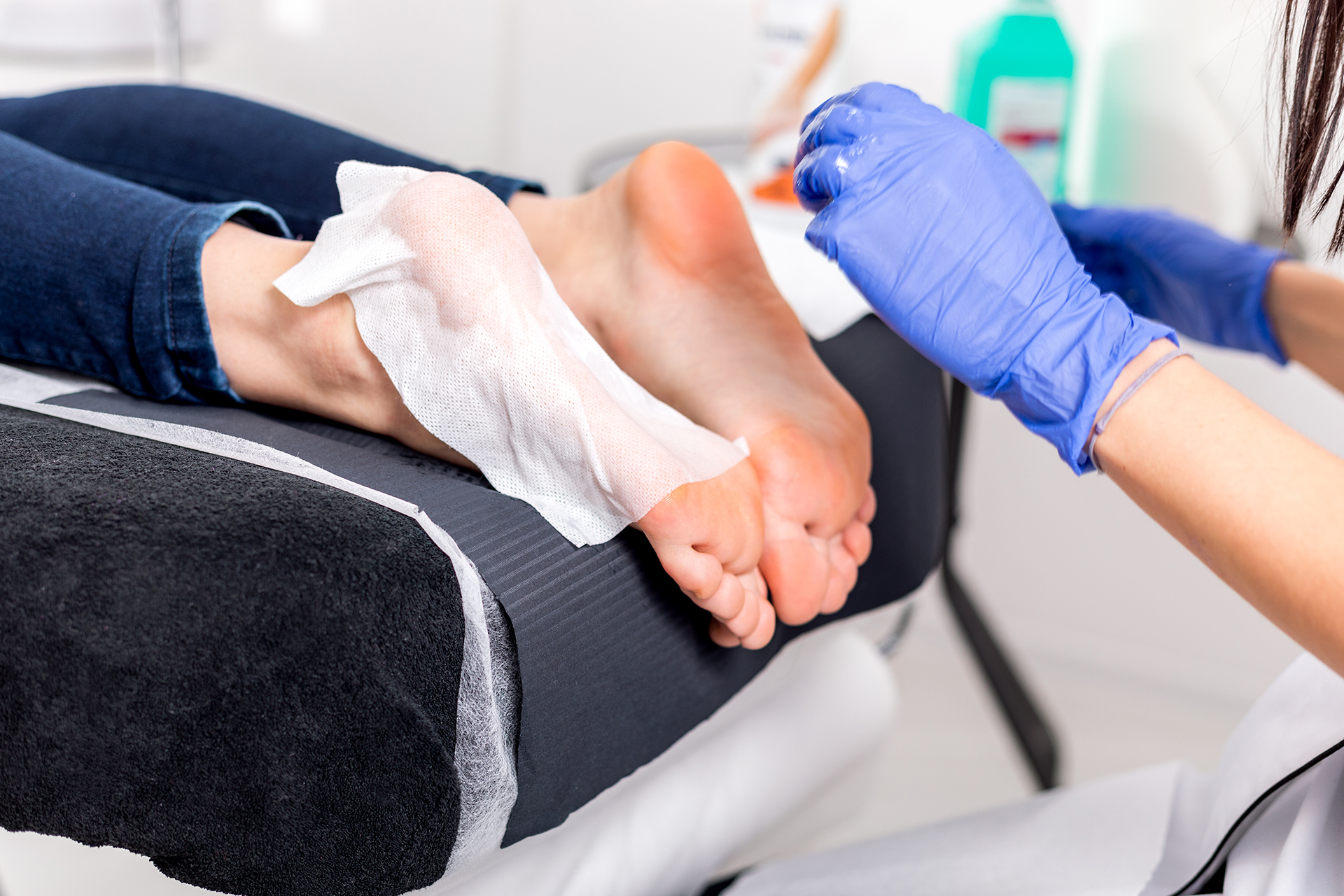
Prevention Is The Best Medicine
Perhaps the most important message we can share is that many diabetic ulcers are preventable. By combining proactive foot care, regular check-ups and early intervention, the risk of ulceration and, more importantly, amputation drops significantly.
At The Foot Practice, our prevention strategy includes routine diabetic foot screenings, RehaWalk gait analysis, footwear checks and ongoing patient education. These measures help reduce the risk of developing foot ulcers and related complications, such as infection and delayed healing. We empower individuals to take ownership of their foot health, with full support from a skilled and compassionate team.
If you or a loved one is living with diabetes, don’t wait for an ulcer to develop. Book a consultation with The Foot Practice’s experienced team, and let us guide you on the path to recovery and prevention.
Your feet carry you through life. Let us help you protect them.


